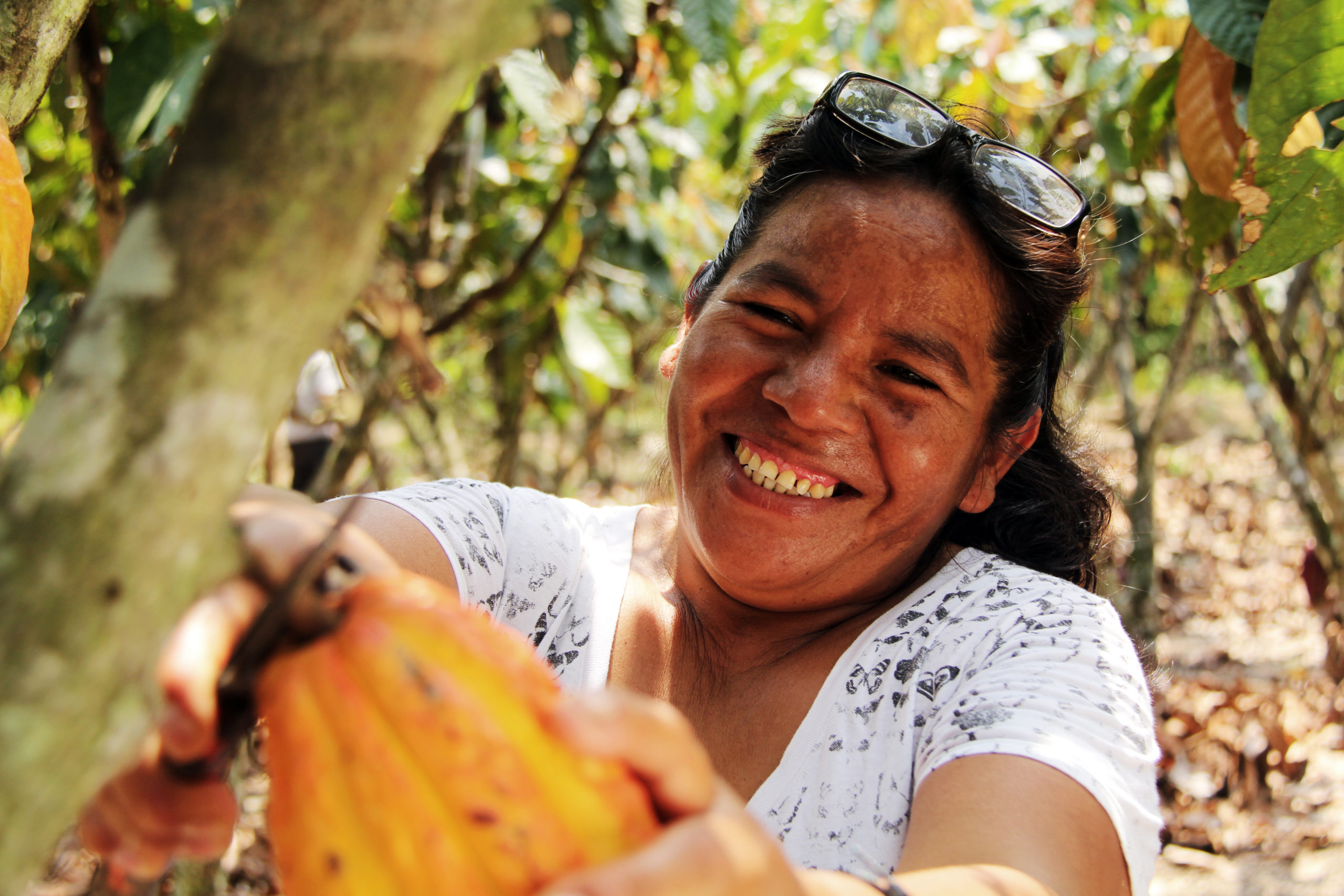Meet Genoveva Cueva Espinoza, a local cacao farmer working in the buffer zone of our Cordillera Azul National Park project in Peru. She comes from a town called Cachiyacu in the district of Pólvora and the province of Tocache, Peru. CIMA, the Peruvian NGO that implements our Cordillera Azul National Park project, supports local cacao farmers, including Genoveva, with technical assistance
We spoke with Genoveva about how CIMA has supported her and her community to improve their livelihoods.
Genoveva: CIMA has been working here since 2003. First, the organisation worked with the community in the centre of Cachiyacu. The park rangers came to show us how the park is looked after through various workshops. They also supported us with the necessary procedures to present our business plan to AGROIDEAS – (an agency of the agricultural ministry that gives financial support to small famers or entrepreneurs working on agriculture).
One of the ways that CIMA has supported local farmers is through developing a cacao collection centre where members of the cacao cooperative bring their produce.
Interviewer: How important is it for you now to have the cacao collection centre?
Genoveva: As producers it is very important for us that partnering generates higher volumes and that we can sell it at a better price. When we work individually with intermediaries, they impose the price that suits them and there is small profit.
That is what we have changed, being associated with the cacao collection centre, we sell to those who offer us more. That was our vision, that’s why the collection centre is called New Vision.
Interviewer: What have you learned from the training given by CIMA
Genoveva: We are taught to care for the forest and identify benefits it offers, which are twofold:
- First, the catchment of the rains, thanks to which the basin does not dry up. Otherwise it would be chaos, because in other places, there are no rains and the people are suffering.
- The other benefit is that forests capture carbon.
Interviewer: What have you been learning about conserving the forest, taking care of it, taking care of the park? Before people received this training, how did they behave? How was your relationship with the park?
Genoveva: Now we can see wildlife, there are animals in the park. Before we formed groups and we went hunting and some people sold the animals for business. Others went to the park to make fields for crops. In the trainings we have learned that it is not good to do that.
CIMA has taught us what time to go hunting – but not for business, only for our family.
Interviewer: Now that you have learned these things, why do you think it is important to take care of the park? Imagine that you meet a person who is still engaged in felling, in the field, what would you say to that person now that you know all this?
Genoveva: I would say, “Dear friend, do not try to cut the trees because those are the plants that have to capture carbon.”
Interviewer: To your children, to your family, to the family of the associates, how has cacao changed your quality of life?
Genoveva: For us cacao is a blessing, because we no longer have to wait a month to receive money, but in 15 days or 20 days we are harvesting again. If you lack money, you go and harvest a little more and sell it and you are better, that is, we are no longer hopeful in coca, which makes you wait three months for you to just get money, but cacao is more useful.
Cacao has two strong benefits, it never stops harvesting, all year we have cacao, and the strongest harvests are June and November.
The standard of living is better. At least we can give our children a good diet, a good dress. They can go well fed to school and well uniformed. That is the least that has improved for all partners in this Cooperative.
Those who do not have plots also do better, they work harvesting cacao and they also earn. Cacao is generating income for everyone, not only for the producer but also for those who do not have plots as well.
Interviewer: Tell me finally, what is this new vision that you have? What is the vision in the future? What do you plan to achieve?
Genoveva: Our vision is to have a processing plant right here in our storage centre, to go from selling beans to selling chocolate bars, which would be yet another process, we could sell chocolate bars, drink… everything. That is our vision. We do not want to sell only beans all the time.
Another vision is that we do not want to sell only here, to buyers in the area. When we have large volumes, we want to export independently to other buyers in other countries.
We thank Genoveva for all her work and for the incredible contribution to forest conservation that she is helping. Learn more about the Cordillera Azul project here.
